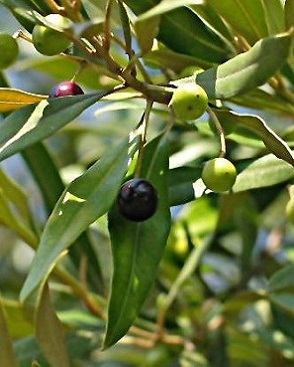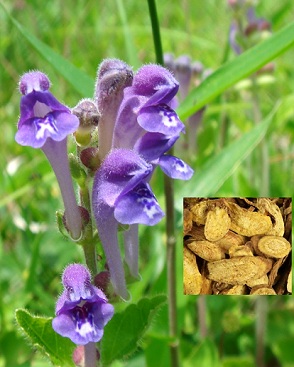- Plant-Based Protein
- Natural Plant Flavours
- Food and Dietary Supplement Ingredients
- Fruit Juice Powder
- Animal Nutrition Ingredients
- Water Soluble Ingredients
- Cosmetic Ingredients
- Unveiling the Therapeutic Potential of Rabdosia Rubescens: A Comprehensive Review
- What are the medicinal properties of Rabdosia Rubescens?
- Nutritional value of Orange Juice Powder compared to fresh orange juice.
- Processing Conditions and Nutritional Value of Orange Juice Powder
- Exploring the Versatility of Herbal Extracts in Food Flavors
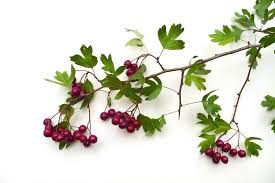
What are the health benefits of hawthorn leaf?
Welcome to our blog! Today, we are diving into the world of hawthorn leaf and uncovering its incredible health benefits. Whether you're a fan of herbal remedies or simply curious about natural alternatives, hawthorn leaf is definitely worth exploring.


Ursolic Acid and benefits,side effect, uses,dosage,anti-inflammatory
Ursolic acid is a ubiquitous pentacyclic triterpenoid compound and can be found in many herbal plants such as hawthorn (Crataegus pinnatifida), Ligustrum lucidum, Prunella vulgaris,Loquat leaves ,basil and Forsythia suspensa. Ursolic acid has anti-inflammatory and antihyperlipidemic properties. It improve the health of skin and hair.Recently, ursolic acid has been identified as a possible remedy for muscle atrophy in a screen for small-molecule inhibitors of skeletal muscle wasting in mice.
What you may get from us: If you're developing a product that contains ursolic acid.I think you can find the information or products you need here.
Simple production process in our factory: After the plant is collected, raw material will be processed by solvent extraction, separation and purification, filtration, concentration, purification,drying and other steps to form the final products. We may also design a prouction process based on your special requirements.
Through the physical and chemical processes, those compunds you don't want was removed, and the compunds preferred was accumulated. Which make the products achieve the best effects.
How to use Ursolic acid powder: What you need is just use our products to formulate your products. It can be mixed with your other ingredients directly to make premix products. It can also be directly used for filling capsules or making tablets. And if your dosage form is tincture or solution, It can also be suitable. Easy to say, our products are ready for Formula products.
|
Ursolic acid |
||
|
CAS No. |
77-52-1 |
|
|
Appearance |
Powder |
|
|
Color |
White |
|
|
Partical size |
Normally pass through 80mesh |
|
|
Pack size |
25 kg per paper drum |
|
|
Purity of active compunds |
50%,90%,98%Ursolic acid |
By HPLC |
|
For pricing or more information, please call 86 29 88444632 or send an email to Sales@nutraherbsource.com |
||
General Information
Product Name:Ursolic Acid
Chemical Name:(3 beta)-3-hydroxy-urs-12-en-28-oic acid;
Common Name:Urson, prunol, micromerol, and malol
Botanical Source (Plant origin): hawthorn (Crataegus pinnatifida), Ligustrum lucidum, Prunella vulgaris,Loquat leaves ,basil and Forsythia suspensa.
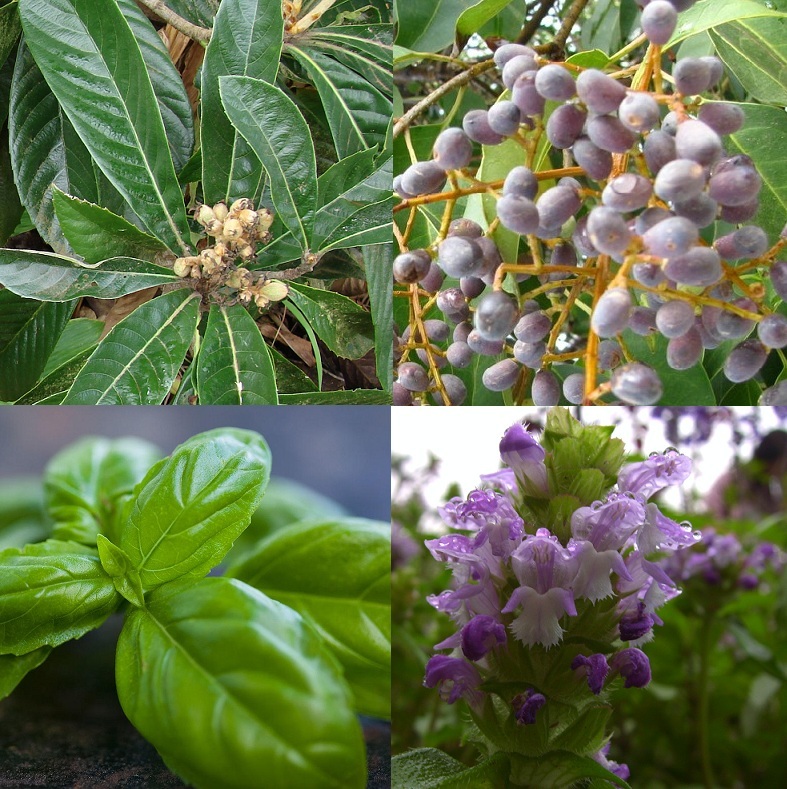
Chemical Structure:
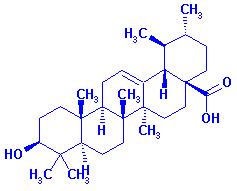
|
Ursolic acid |
|
|
C30H48O3 |
|
|
456.68g/mol |
|
Introduction:What is Ursolic acid
Ursolic acid, a carboxylic acid present in a wide variety of plants in the form of a free acid or an aglycone of triterpene saponins.It is also known as urson, prunol, micromerol, and malol, is a pentacyclic triterpenoid compound which naturally occurs in a large number of vegetarian foods, medicinal herbs, and plants. Ursolic acid was found to be medicinally active both topically and internally. Its anti-inflammatory, antitumor (skin cancer), and antimicrobial properties make it useful in cosmetic applications.
Notwithstanding its numerous cosmetic properties, ursolic acid is an ideal cosmetic ingredient because its overall toxicity (both chronic and acute) is low. It is not a primary irritant or sensitizer. In fact, it has been termed dermatologically innocuous.
Mechanism of Action
According to research, ursolic acid may have multiple effects in the body.
One key mechanism is ursolic acid’s ability to block cell signaling pathways. By blocking certain pathways, like MAPK/ERK and PI3K/AKT/mTOR, ursolic acid may alter how cells grow and replicate .
Ursolic acid may also able to inhibit certain transcription factors and enzymes. For example, some studies suggest ursolic acid blocks COX-2, an enzyme involved in inflammation, and NF-κB, a transcription factor that plays an important role in the immune response.
Some other potential mechanisms include increasing the gene expression of bone cells, possible antibacterial properties, and promoting the activity of GLUT4, an important glucose transporter in the body.
Health Benefits of Ursolic Acid:
1.Pharmacological Action:
Contemporary scientific research which led to the isolation and identification of ursolic acid revealed and confirmed that several pharmacological effects, such as, anti-tumor, hepatoprotective, anti-inflammatory (oral and topical), anti-ulcer, antimicrobial, anti-hyperlipidemic and antiviral, can be attributed to ursolic acid.
However, its anti-inflammatory (topical), anti-tumor (skin cancer), and antimicrobial properties are pertinent to the cosmetic industry.
2.Anti-aging agent:
Ursolic acid treatment improves the health of skin and hair. Ursolic acid and its derivatives form oil-resistant barriers on the skin and hair as they do in the waxy coating of fruits6. Ursolic acid has been used to treat photoaged skin because it prevents and improves the appearance of wrinkles and age spots by restoring the skin's collagen bundle structures and its elasticity. Concentrations of ursolic acid ranging from 0.01 to 50 mg have been reported for inclusion in skin treatment preparations.
3.Hair growth stimulant:
Ursolic acid and its isomer, oleanolic acid, have been used to enhance hair growth and prevent scalp irritation. Both triterpenoid compounds encourage hair growth by stimulating the peripheral blood flow in the scalp and activating the hair mother cells. They also furnish alopecia-preventing and dandruff-preventing effects.
4.Antimicrobial activity:
Ursolic acid (triterpenoid sapogenin from the ursan group) inhibited the growth of several strains of staphylococci. Numerous ursolic acid containing plants from the Lamiaceae family exhibited antibacterial/ fungal activity. The minimal inhibitory concentration of Rosmarinus officinalis, Origanum majorana, and Lavandula officinalis were 500, 250, and 500 mg/cm, respectively. Ursolic acid also inhibited the growth of Microsporium lenosum and Candida albicans at 250 mg/mL.
5.Anti-inflammatory activity:
Ursolic acid is a potent anti-inflammatory agent. Thus, it has been recommended for use in burn ointments. It not only inhibits human leucocyte elastase(HLE), but also 5-lipoxygenase and cyclooxygenase activity. Ursolic acid (1.0 mg/ear) inhibited TPA-induced mouse ear edema by 72.4%. Hirota and coworkers determined that 200 mg and 50 mg applications of ursolic acid inhibited 12-O-hexadecanoyl-16-hydroxyphorbol-13-acetate (HPPA) - induced inflammation by 49% and 33%, respectively. In addition, it inhibited concanavalin A (Con A) induced histamine release, which can cause severe inflammation, by 95% at a concentration of 0.001 M.
6.Inhibition of tumor promotion in skin:
Ursolic acid and oleanolic acid , inhibited Epstein-Barr virus activation induced by 12-O-tetradecanoylphorbol 13-acetate (TPA) in mouse skin. The inhibitory effects were evaluated for 20 weeks. Continuous application of UA and OA (41 nmol of each) before TPA-treatment (4.1 nmol) delayed the formation of papillomas in mouse skin and reduced the rate (%) of papilloma bearing mice. Both UA and OA exhibited remarkable inhibitory activity against tumor promotion, which is comparable to the known tumor inhibitor, retinoic acid (RA). Compared to either RA or OA, ursolic acid inhibited tumor more effectively after a single application before initial TPA-treatment as shown in Figure 1. This suggests that the role of tumor inhibition by UA differs from that of either RA or OA. It is suggested that pretreatment of skin with UA may inhibit the first dramatic cellular event in tumor promotion caused by TPA.
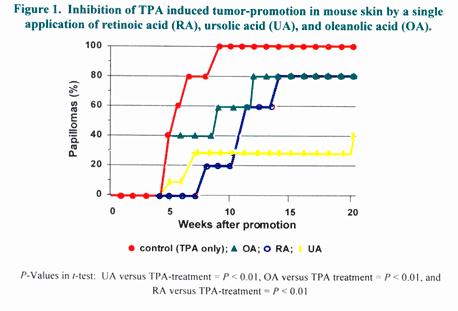
Topical application of ursolic acid inhibited TPA-induced tumor initiation and promotion, inflammation, and ornithine decarboxylase activity in mouse skin. Ursolic acid exhibited strong anti-inflammatory activity. It is even more active than of 1 or 2 mmol of ursolic acid along with 5 nmol of TPA for TPA for 20 weeks inhibited the formation of skin tumors per mouse by 45 or 61% respectively.
Lower doses (0.1 or 0.3 mmol) of ursolic acid had a similar inhibitory effect as the higher doses. Twice weekly topical application of 0.1, 0.3, 1, or 2 mmol of ursolic acid along with 5 nmol TPA for 8,12, and 18 weeks reduced the number of skin tumors per mouse by 52-86%, 49-63%, and 44-61%, respectively.
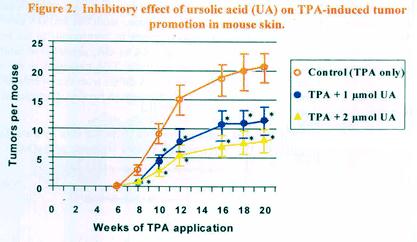
Each point represents the mean + SE from 30 mice pper group.
* means statistically different from TPA control group (p<0.05)
Ursolic acid and its isomer, oleanolic acid have been recommended for skin cancer therapy in Japan. Topical cosmetic preparations containing ursolic acid/ oleanolic acid have been patented in Japan for the prevention of topical skin cancer. An ursolic acid/ oleanolic acid ointment inhibited 7,12-dimethylbenz [a] anthracene (DMBA)-induced skin cancer in mice. Reportedly, 0% and 3% of mice developed cancer in 15 weeks and 30 weeks, respectively compared to 50% and 90% for the control mice.
7.Skeletal Muscle Health
Recently, ursolic acid has been identified as a possible remedy for muscle atrophy in a screen for small-molecule inhibitors of skeletal muscle wasting in mice. Interestingly, supplementation with ursolic acid to mice on a high-fat diet increased muscle mass and strength, improved glucose tolerance, promoted brown adipose tissue deposition, and decreased white adipose tissue mass and the severity of hepatic steatosis.
8. Cardiovascular Disease
One study in rats suggests that ursolic acid may reduce high blood pressure by reducing heart rate and having a diuretic effect.
Several studies that artificially induced heart attacks in rats suggest that ursolic acid may help restore enzyme function and prevent DNA damage.
However, there is also evidence that ursolic acid may be detrimental to the cardiovascular system. An animal study found that ursolic acid may promote plaque formation in the blood vessels. In addition, a different animal study suggests that ursolic acid may make blood platelets become stickier and more likely to form clumps.
Safety,Side effect of ursolic acid
Research studies have clearly suggested that ursolic acid is non-toxic and might be utilized as a valuable therapeutic agent for the treatment of cancer. Research studies has revealed that ursolic acid has shown low cytotoxicity in liver [HepG2], gastric [AGS], colorectal [HT-29] and bladder [NTUB] etc, however, their combination with other phytocompounds at low concentrations further minimize their toxic effects and enhance treatment process. The safety and tolerability of ursolic acid at different concentration/dosage were evaluated by different in vitro and in vivo models. Toxicological study using ursolic acid suggest that dietary consumption of ursolic acid up to 9.26 g/kg is well tolerated. Some other toxicological studies of UA-liposomes on 63 controls have revealed the manageable side effects with a tolerable concentration of 98 mg/m.
Dosage:
Consult a physician for advice.
- Prev:St. Johns wort Extract and benefits,side effect, uses,dosage, Anti-Depression
- Next:Flaxseed Extract(Lignans) and benefits,side effect, uses,dosage,Phytoestrogen



